Cars as Guests in Streets is Best
"Game Central" and seeing Old Town, Alexandria with new eyes
A fraught topic among urbanists is when to separate cars and pedestrians. Obviously cars should not drive on the sidewalk and kids should not play on the side of a highway, but there is plenty of gray area to argue about. I have found that strident U.S. urbanists, with a mindset carefully eschewing normie assumptions, aggressively argue for aggressively separating vehicles from pedestrians. As in my piece on the merits of front-facing townhouse garages, I wish to challenge that orthodoxy, inspired by my children and a parade our family got to participate in through Old Town, Alexandria.
My oldest kids just turned 6 and 4 years old. They are avid bike riders and need at least one, ideally two sessions of intense outdoor play for their behavior to be manageable, especially at bedtime. A blessing of living in a townhouse community is having many neighbors with kids. Our street is isolated from car traffic, so kids tend to funnel there, plus a little playground draws families from a surprisingly large radius.
In the past couple of months our kids and their friends began using sidewalk chalk to turn the street near our house into “Game Central” — a kaleidoscope of elaborate variations on hopscotch with discrete sections that only one kid might understand. They also have a strong current interest in Stomp Rockets, launching foam darts into the street, ballistically asserting even greater dominion over the physical space.
This development has had a subtle but powerful effect on our street. Traffic was already quite slow but is even more careful now, especially when there is a critical mass of kids. The chalk drawings last a few days, signaling children’s late afternoon congregations. Kids are like an excited gas, filling any space available to them. Relaxing our standard rule against our kids playing in the street on foot has been totally natural. Our third child just started walking and we even let her venture into the street, monitoring her closely. There are many adults around watching for cars, and the laid back atmosphere means the kids are happier and we are freer to engage each other in real conversation. Everyone smiles, talks, and laughs more than usual.
The green figure in the first photo wearing a scarf is our ‘caution, kids playing’ sign which we call Nick. Every time I see a Nick or similar cautionary marker while driving around, warning of children at play in a place where cars pose a threat, I get a feeling that the sign could use some backup, or safer street design.
The lesson I take away from “Game Central” is that we can shift the balance of power in public spaces toward children and pedestrians with something as simple as chalk drawings. (Art on crosswalks is supposed to prevent drivers from hitting pedestrians.) It is pretty clear to me that everyone from the children to the drivers are better off from sharing space and being made conscious of each other’s presence. The mingling has a humanizing effect on everyone. Not to mention the extra land that would be paved for alleys to serve rear-facing garages, or the fact that we would see our neighbors so much less if we drove from and to our homes in isolation.
A street is a destination; it should be for the people who live, work, or otherwise spend time there. Many places should be car-free, obviously, but because cars are essential to modern life and take up so much space, if you try to separate them completely from pedestrians you are likely to end up limiting the places where, for example, children can safely play. Shared spaces that cue drivers to be careful are simply more scalable and practical, while feeding into a culture of safety.
The streets in Tokyo and Dutch suburbs operate on these principles of cars as guests. Cars move slowly and extremely deliberately while people walk freely without having to watch out for speeding drivers. It is all very safe and rather pleasant.
Parading Through the Streetscape
A few weeks after our third child was born we walked in our city’s Christmas parade at the invitation of the Alexandria Library Foundation. While waiting for the parade to start, we spotted old streetcar tracks, peeking out like a ghost of Christmas past.
My wife and kids visit our local library often and are friendly with the children’s librarian, who asked her about the parade. I relished this opportunity after hearing so many times during zoning fights that YIMBYs are not real community members.
As we marched through our city’s colonial-era downtown, called Old Town, the architecture of the historical buildings seemed to take on new life as I enjoyed them from the middle of the street. Facades somehow made more sense, and the structures with more intricate detail stuck out even more. NIMBYs think they are defending this traditional form of development, not threatening it with stagnation and decay.
Many of the buildings were constructed when people navigated streets by foot or horse-drawn carriage. The streetscape was meant to be looked at and enjoyed. If you are driving it almost feels like a distraction. The streets were for people.
I hope we will find ways to make streets more for people, and that doing so restores our sense of connection to the places where we spend our lives, and to each other. More desire for timeless beauty, more friendships … maybe even more chalk drawings.
Thanks to my 995 subscribers, especially my 15 paid subscribers. If you enjoy this blog or want to work together please contact lucagattonicelli@substack.com. I founded the grassroots pro-housing organization YIMBYs of Northern Virginia and live in Alexandria near DC.
Front-Facing Garages Can Be Great
I made the mistake of tweeting my belief that front-facing garages are actually better for townhouses than rear-facing garages. Front-facing consumes less land, funnels people into one shared space, and allows for a private backyard or, I d…

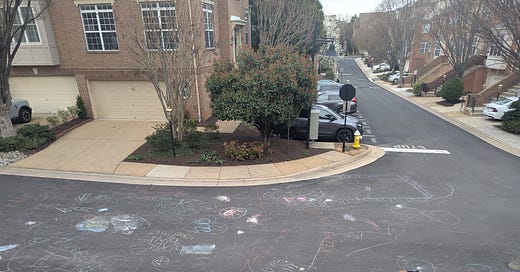



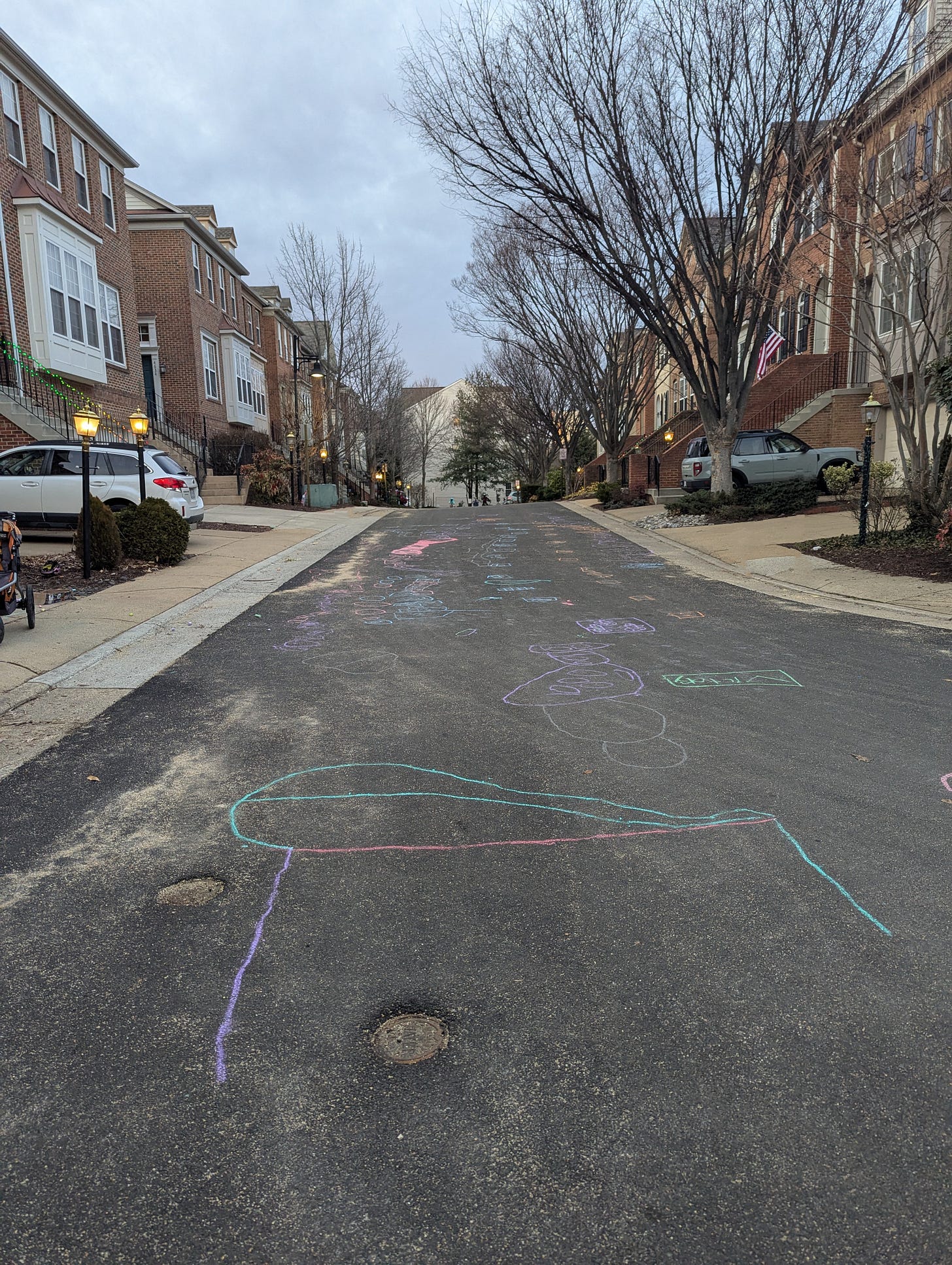
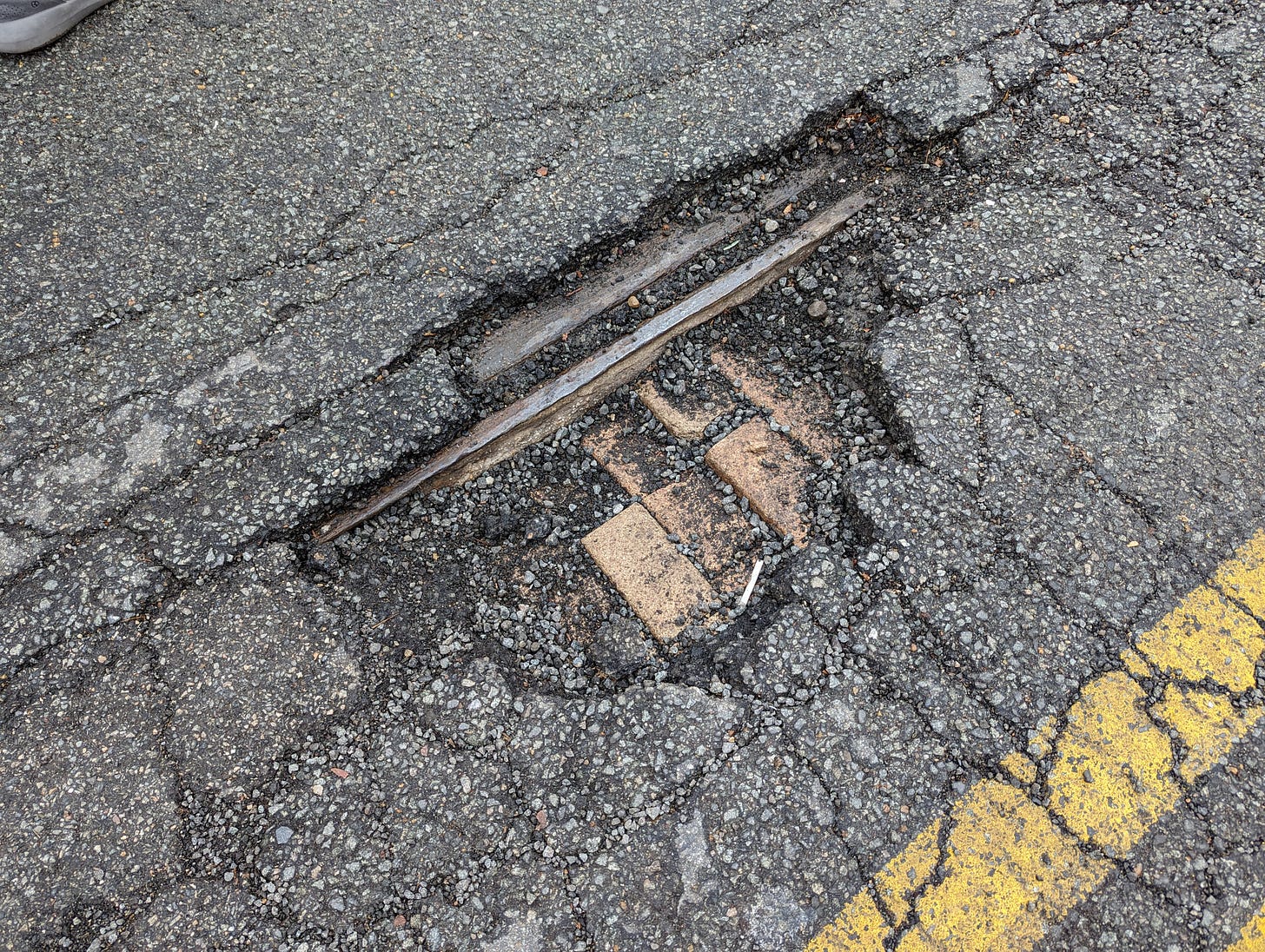
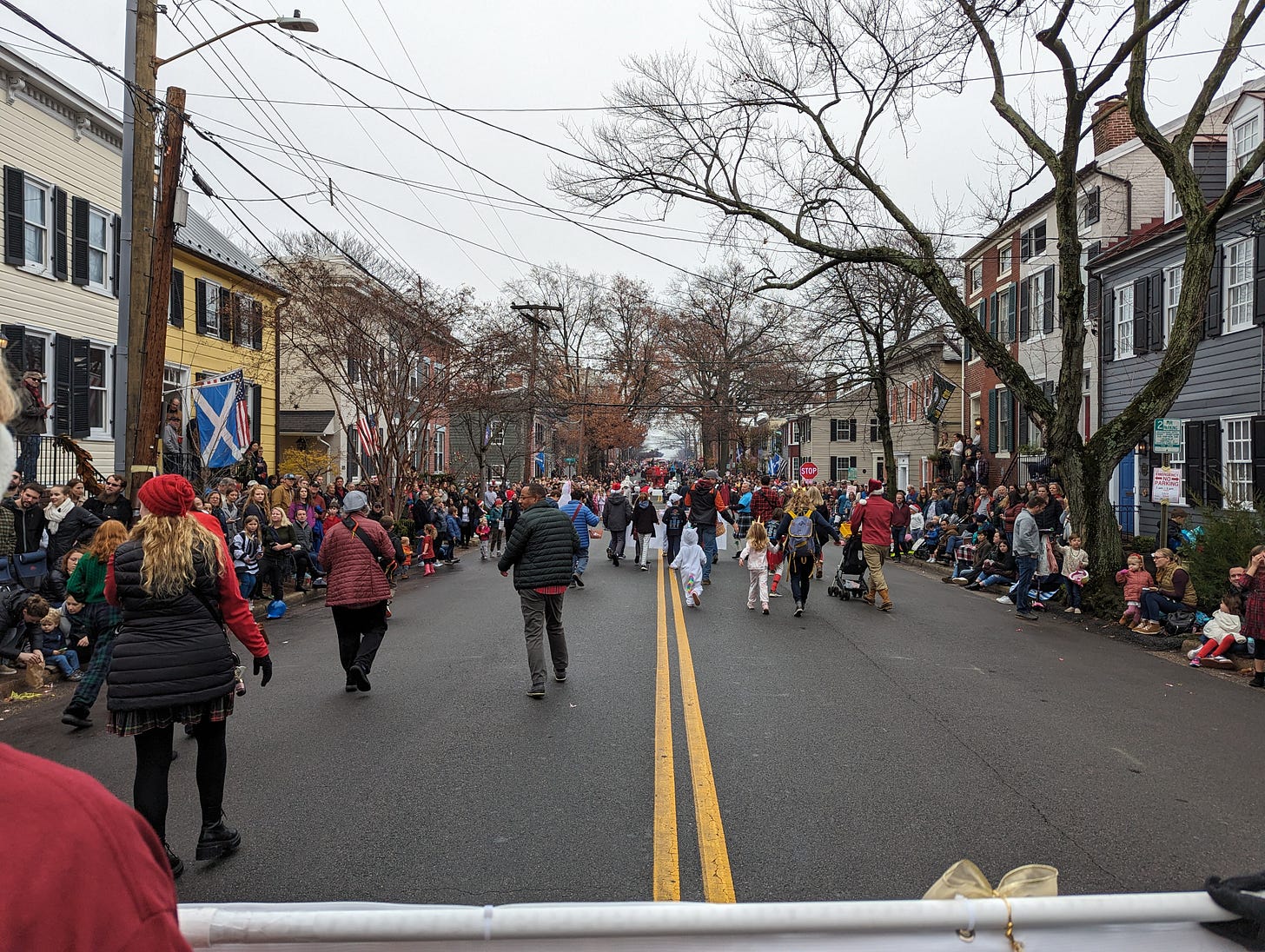
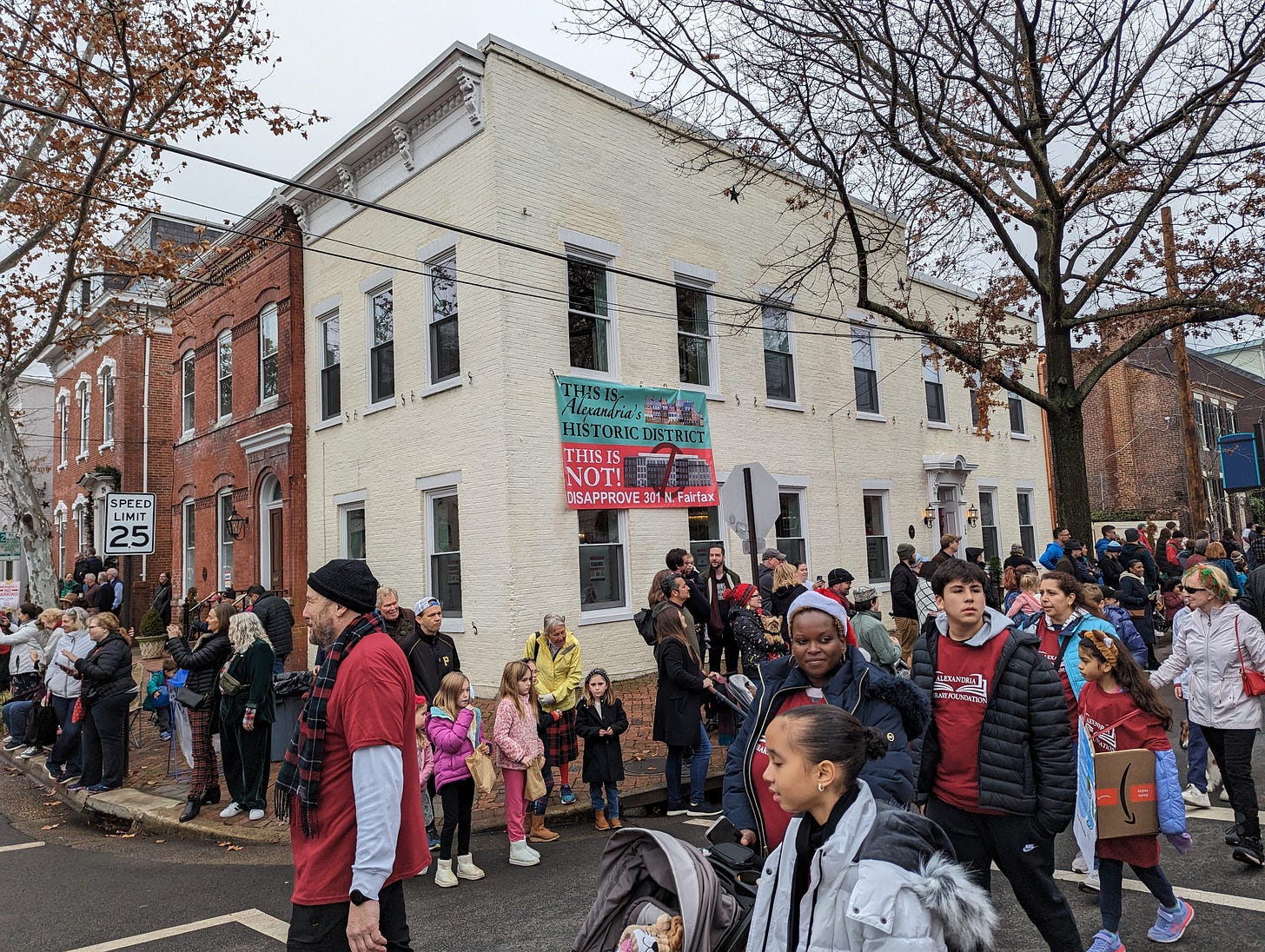
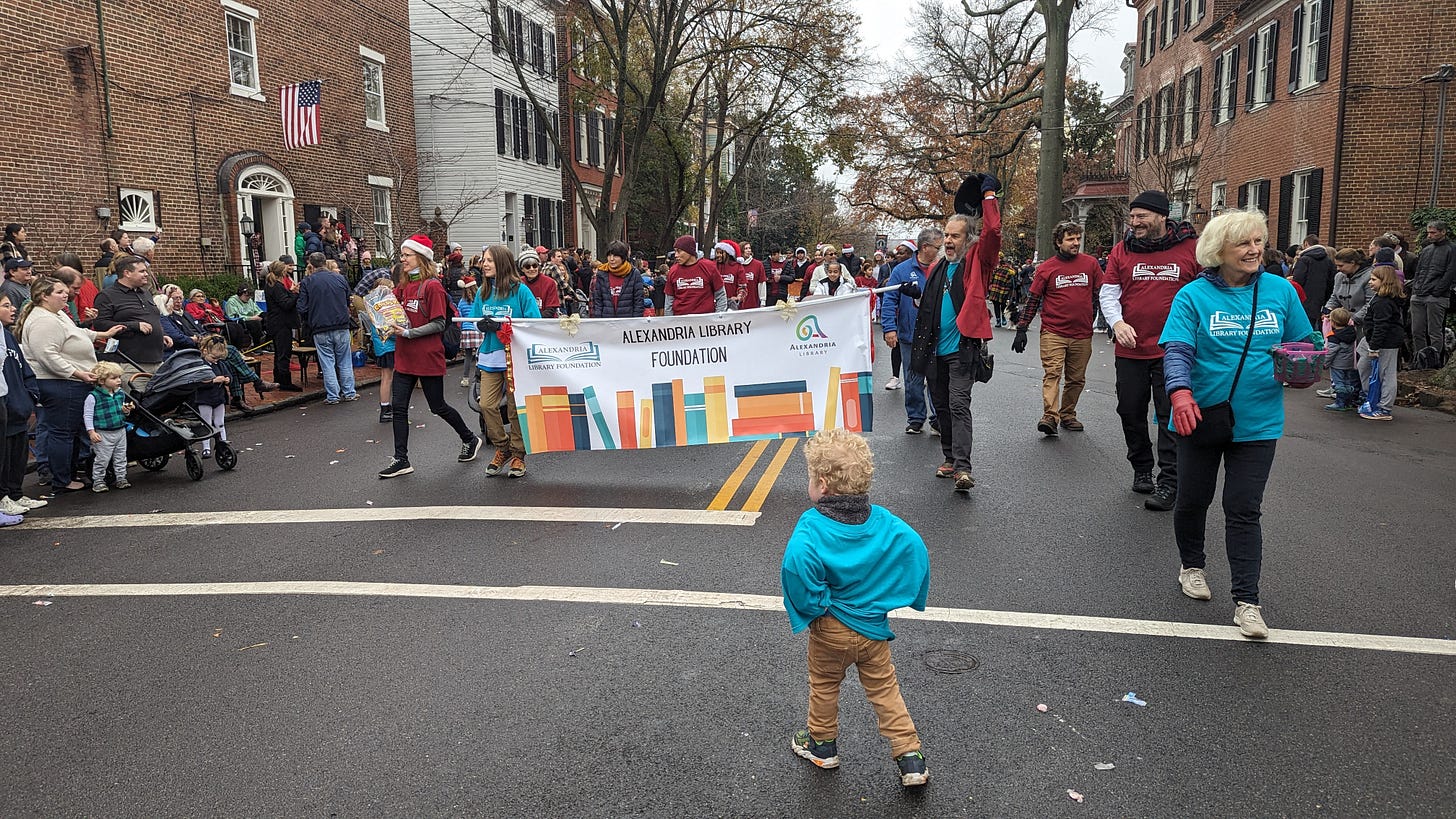
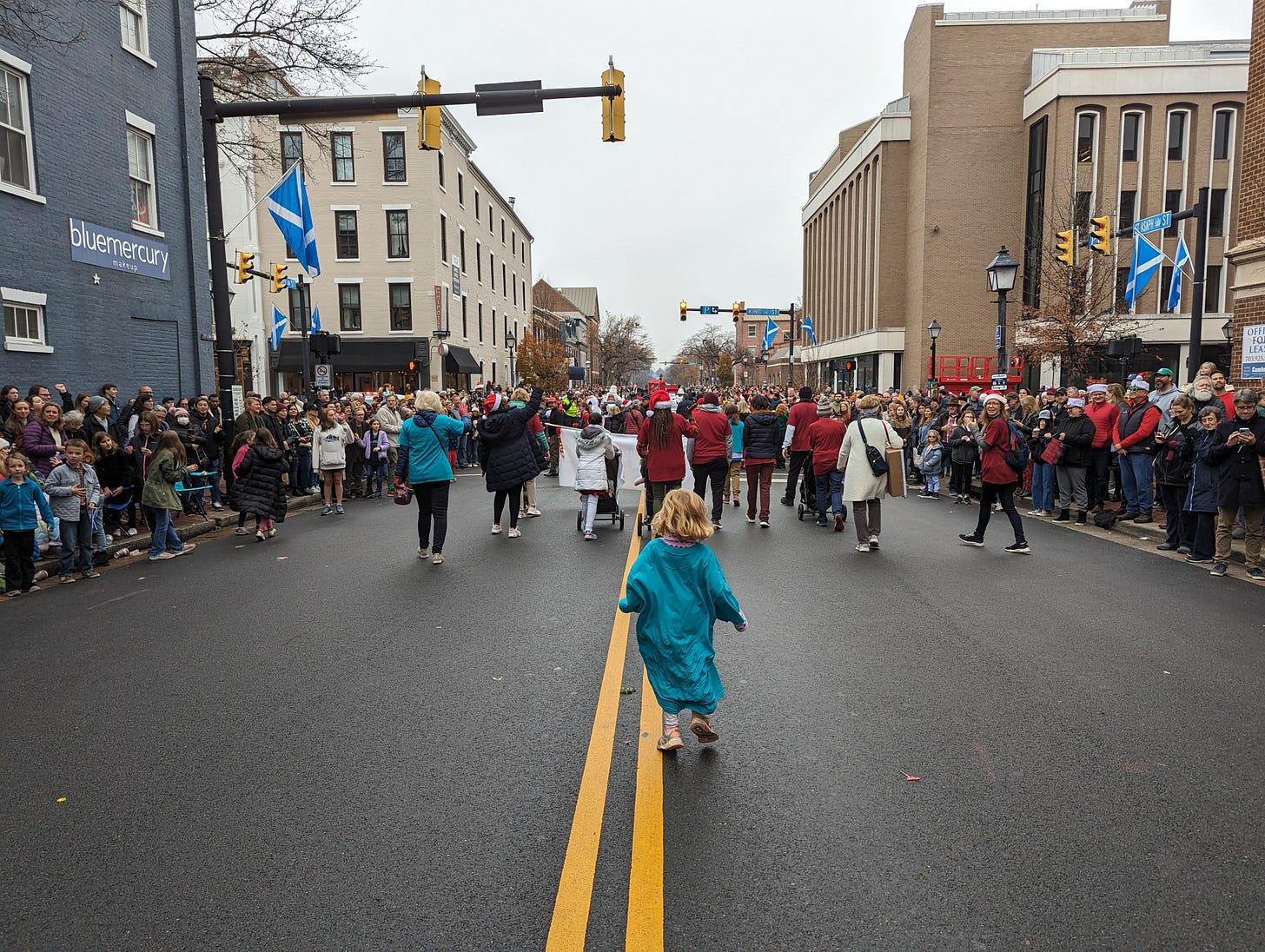
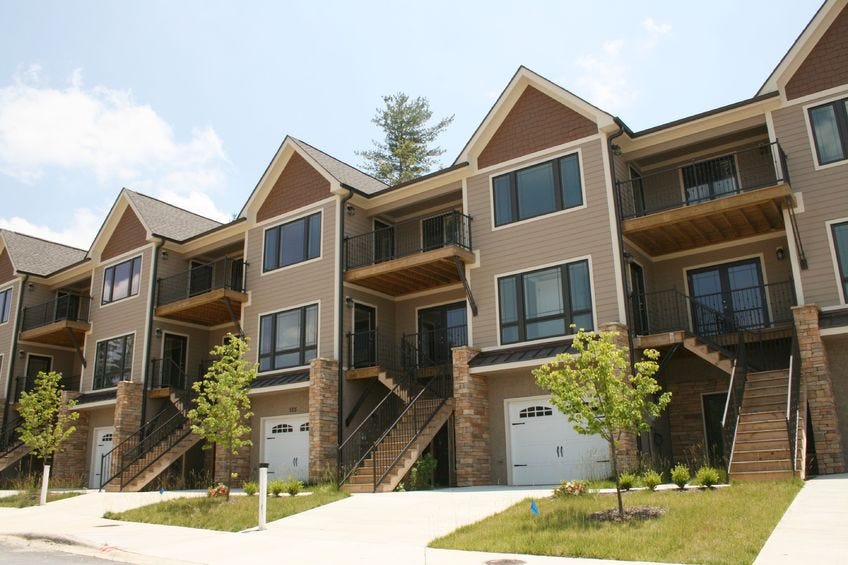
Narrow streets are great. Narrow streets with children's chalk drawings are even better.